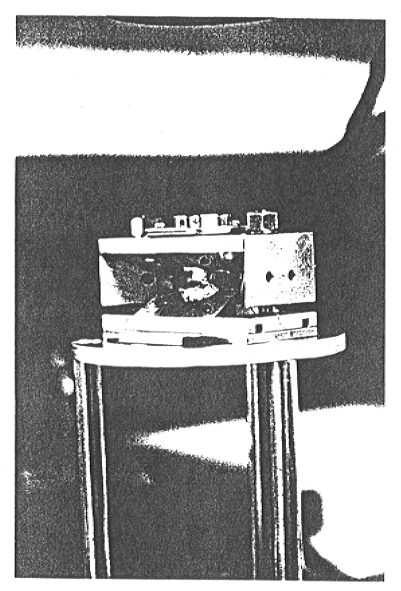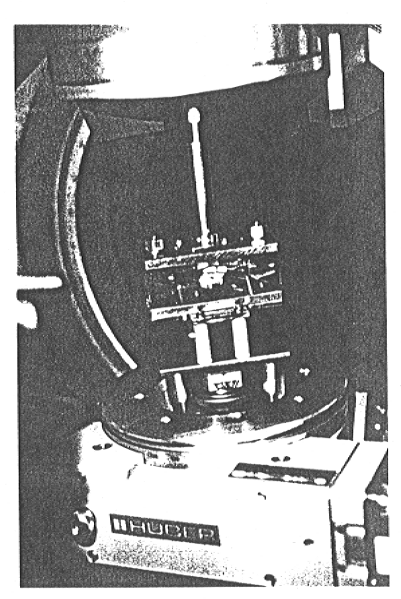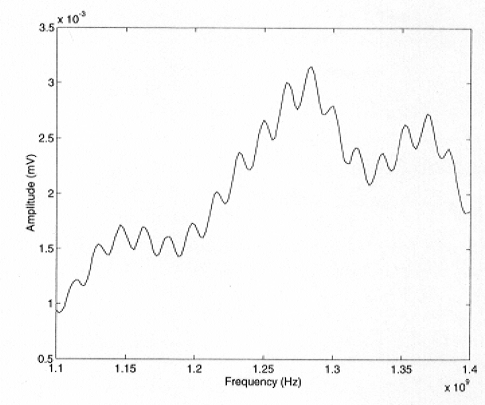

The mineralogy and the composition of the Earth's interior are mainly
constrained by seismological data. In order to test the various petrologic
and compositional models it is important to know exactly the longitudinal
and transverse sound velocities, vp and vs, of relevant
minerals at deep mantle conditions. Also the associated quantities such
as the bulk modulus K, the shear modulus G and the derivative (d ln vp,s
/ d ln  ) T, with
) T, with  density, are important input parameters for modelling of the Earth's interior.
density, are important input parameters for modelling of the Earth's interior.
As a first step to measure sound velocity as function of pressure we
succeeded in combining the ultrasonic technique with a conventional Merrill-Bassett
diamond anvil cell. This has been described in the Annual Report 1995.
In order to measure vp and  at the
same time we have built a diamond anvil cell (Figs. 3.8-2 and 3.8-3) which
enables us to perform in-situ sound velocity measurements and X-ray diffraction
measurements in the same experiment.
at the
same time we have built a diamond anvil cell (Figs. 3.8-2 and 3.8-3) which
enables us to perform in-situ sound velocity measurements and X-ray diffraction
measurements in the same experiment.
 |
 |
Fig. 3.8-2: The new developed diamond anvil cell. The pressure in the sample chamber can be increased by means of the two nuts on top of the cell. The holder of the ultrasonic attachment can be seen between the nuts. |
Fig. 3.8-3: The cell in the four circle goniometer. It is fixed on four pyrophyllite rods which act as a thermal insulator. On the left side of the cell the ultrasonic attachment can be seen holding the buffer rod with the transducer. |
The special feature of this new cell is the enforced use of a transverse
diffraction geometry because of the mounting of the ultrasonic buffer rod
to one of the diamond anvils. First experiments with this new cell proved
the feasibility to perform X-ray measurements on single crystals at high
pressure on a four circle goniometer with a precision of 10-4.
Gigahertz ultrasonic signals have been obtained with this new cell from
MgO and CaF2 samples using KBr or alcohol mixture as pressure
medium. Figure 3.8-4 shows the interfered diamond sample echo of CaF2
as thick as 200 micron in the new cell at an estimated pressure of
about 5 kbar. We obtained with this cell a pressure of almost 50 kbar.
Currently, we are working on the improvement of the cell loading technique
and on testing various pressure media.
 |
Fig. 3.8-4: Interfered diamond-sample echo of CaF2. The measurement was performed in the new diamond anvil cell. The sample is as thick as 200 micron, the pressure medium is KBr. The pressure is estimated to be about 5 kbar. |

Tel: +49-(0) 921 55 3700 / 3766, Fax: +49-(0) 921 55 3769, E-mail: bayerisches.geoinstitut(at)uni-bayreuth.de
 Previous page
Previous page